#Ancient egypt
Text

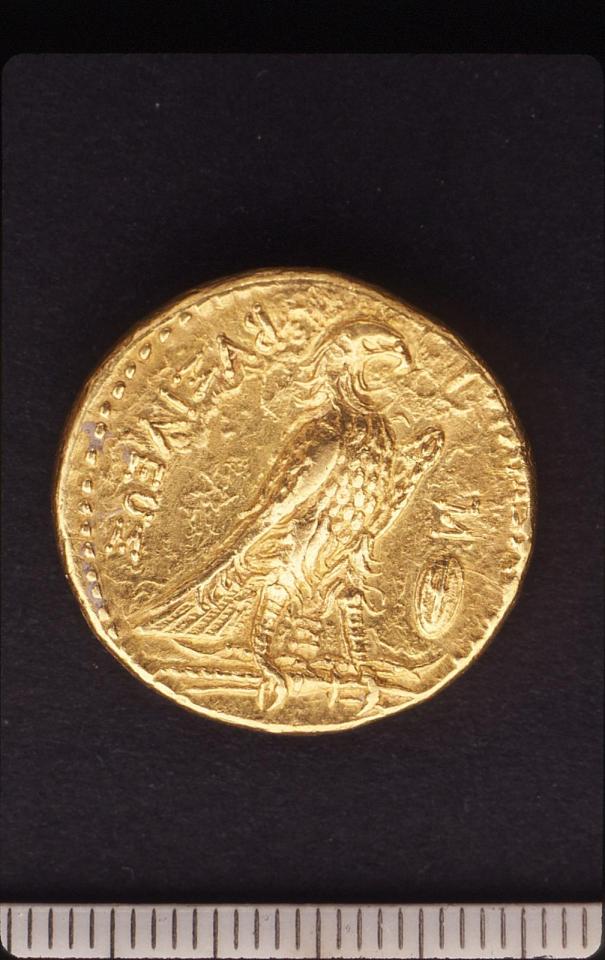
Gold pentadrachm, Ptolemaic Egypt, 285-246 BC
from The Penn Museum
150 notes
·
View notes
Text

"Marking the one hundredth anniversary of the discovery of Tutankhamun’s magnificent tomb, its incredible treasures are revealed as never before.
In 1922, after fifteen years of searching, archaeologists finally discovered the tomb of King Tutankhamun. There, buried alongside the king’s mummy, they found more than 5,000 unique objects, from the mundane to the extravagant, from the precious to the everyday. Tutankhamun’s spectacular gold mask is justifiably famous, but the rest of the treasures remain largely unknown, their stories untold.
In this rich and beautifully illustrated work of history, renowned Egyptologist Toby Wilkinson allows one hundred artifacts from the boy king’s tomb to speak again―not only for themselves, but as witnesses of the civilization that created them. A gold-decorated chariot reveals the impressive scale of Egyptian technology. Loaves of bread, baskets of fruit, and jars of wine hint at the fertility of the Nile Valley and the abundant feasts enjoyed by its people. Ebony and ivory from Nubia and a jewel of Libyan desert glass show the range of Egypt’s trading and diplomatic networks. Shaving equipment and board games provide a window into the everyday lives of the people. And perhaps most poignant of all the objects in the tomb is one that conjures up a lost world of human experience: Tutankhamun’s silver trumpet.
Through these treasures, Wilkinson bring us face-to-face with the culture of the pharaohs, its extraordinary development, its remarkable flourishing, and its lasting impact. Filled with surprising insights and vivid details, Tutankhamun’s Trumpet offers an indelible portrait of the history, people, and legacy of ancient Egypt."
— Tutankhamun's Trumpet: Ancient Egypt in 100 Objects from the Boy-King's Tomb, by Toby Wilkinson
112 notes
·
View notes
Photo

Capitals of Ancient Egypt
88 notes
·
View notes
Text
The fascinating story of the origins of a component in Tutankhamun’s scarab brooch has been furthered this week.
32 notes
·
View notes
Text
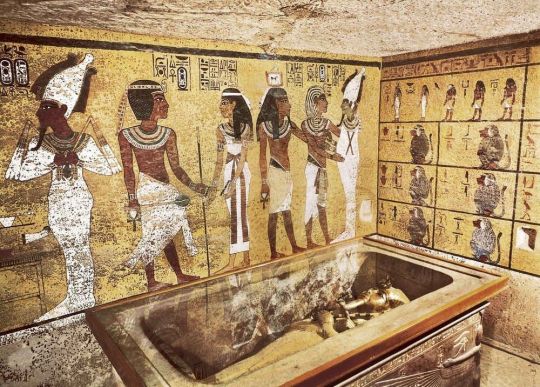
‘Curse’ Behind King Tutankhamun’s Tomb Mysterious Deaths Finally Solved
The unsettling curse of King Tutankhamun’s tomb in Egypt has bewildered archaeologists since it’s been feared to be linked to the mysterious deaths of multiple excavators who discovered it in 1922.
However, a scientist now claims to have solved the mysteries of the infamous “Pharaoh’s Curse” more than 100 years later.
Toxic levels of radiation emanating from uranium and poisonous waste are believed to have lingered inside the tomb since it was sealed over 3,000 years ago, Ross Fellowes wrote last month in the Journal of Scientific Exploration (JSE).

The burial chamber in the tomb of Tutankhamun, near Luxor, Egypt.
The radiation level inside Tutankhamun’s tomb is so high that anyone who comes in contact with it could very likely develop a fatal dose of radiation sickness and cancer.
“Both contemporary and ancient Egypt populations are characterized by unusually high incidences of hematopoietic cancers, of bone/blood/lymph, for which a primary known cause is radiation exposure,” Fellowes wrote in his study.
However, this radioactivity isn’t isolated to Tutankhamun’s tomb.
Fellowes revealed that “unusually high radiation levels have been documented in Old Kingdom tomb ruins” and spread throughout sites in Egypt.
“Radiation has been detected by the Geiger counter at two sites at Giza adjacent to the pyramids,” he wrote, adding that radon — a radioactive gas — has also been detected in “several underground tombs at Saqqara.”
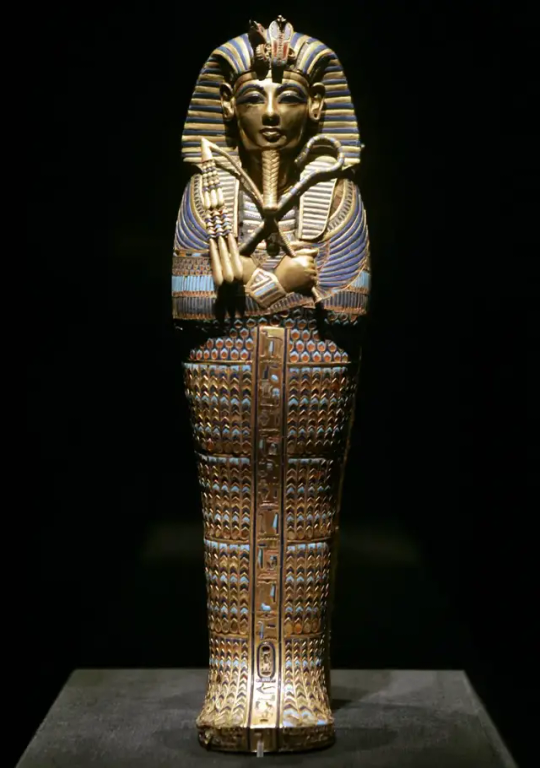
The “Coffinette for the Viscera of Tutankhamun,” which contained the king’s mummified liver, depicts him as Osiris, holding a crook and flail.

Medical imagery of Tutankhamun is shown above a replica of King Tut’s skull on display during the “Tutankhamun And The Golden Age Of The Pharaohs” at the Los Angeles County Museum of Art in California.
These readings were all found to be “intensely radioactive.”
“Modern studies confirm very high levels of radiation in ancient Egyptian tombs, in the order of 10x accepted safety standards,” the study shared.
It’s also theorized that those who built the ancient tombs were aware of the toxins based on the eerie warnings carved on the walls.
“The nature of the curse was explicitly inscribed on some tombs, with one translated presciently as, ‘they that break this tomb shall meet death by a disease that no doctor can diagnose,’” Fellowes wrote.
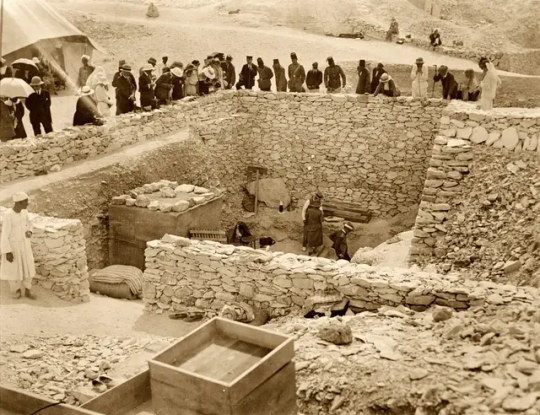
Outside the tomb of Tutankhamun during the 1922 excavation in the Valley of the Kings in Egypt.
Other ominous translations like “forbidden” because of “evil spirits” may have significantly fueled the fear that supernatural curses lingered in the ancient sites.
Those fears intensified with the mysterious deaths of Lord Carnarvon, who funded the excavation in 1922 and reportedly walked through the treasured filled rooms — and multiple others after they unsealed the tomb.
“Carnarvon was dead within a few weeks of the uncertain diagnosis of blood poisoning and pneumonia,” Fellowes wrote.
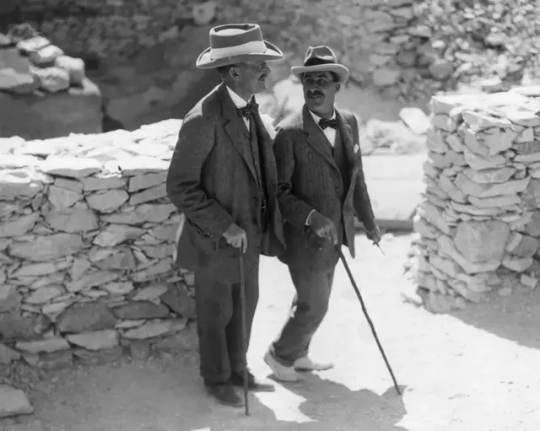
Egyptologist Howard Carter (R) walks with archaeologist Lord Carnarvon, the patron of his research, outside the tomb of King Tutankhamun in 1922.
Egyptologist Arthur Weigall allegedly told colleagues that Carnarvon would “be dead within six weeks” upon entering, the study claimed.
Howard Carter, the first person to walk inside Tutankhamun’s tomb with Carnarvon, died in 1939 after a long battle with Hodgkin’s lymphoma, which was suspected to be caused by radiation poisoning.
British Egyptologist and independent excavator Arthur Weigall was present at the opening of Tut’s Tomb and is also credited with starting the ‘myth’ of the curse.
He died of cancer at 54 years old in 1934.
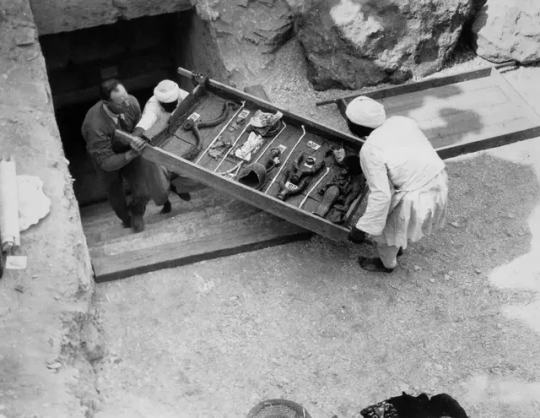
Workers remove a tray of chariot parts from the Tomb of Tutankhamun in the Valley of the Kings, Egypt, in 1922.
In total, six of the 26 people present when the tomb was opened died within a decade from asphyxia, stroke, diabetes, heart failure, pneumonia, poisoning, malaria and X-ray exposure.
While the deaths can be seen as odd, the curse theory was also likely fueled by the oddities that happened when it opened.
Carnarvon had reportedly suffered a mosquito bite that became severely infected.
Around the time excavators opened the tomb, Cairo reportedly suffered a bizarre power outage and a freak sandstorm, according to National Geographic.’
At one point during the excavation, Carnarvon’s favorite dog allegedly let out a chilling howl and suddenly dropped dead.
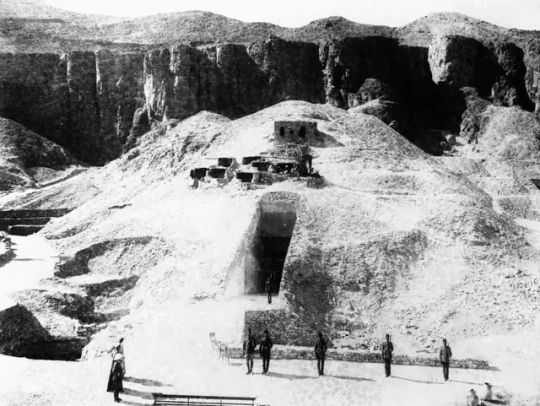
A photograph showing guards standing outside the tomb of Tutankhamun in Egypt in 1922.

A sacred cow being removed from Tomb of Tutankhamun in 1922.
From a historical perspective, the discovery of the tomb in the Valley of Kings is considered one of the most fascinating finds that gave modern society a glimpse into the Egyptian royalty voyage into the afterlife.
Five thousand items, including solid gold funeral shoes, statues, games, and strange animals, were discovered inside Tutankhamun’s tombs.
It would take the excavators ten years to clear the tomb of its treasure.
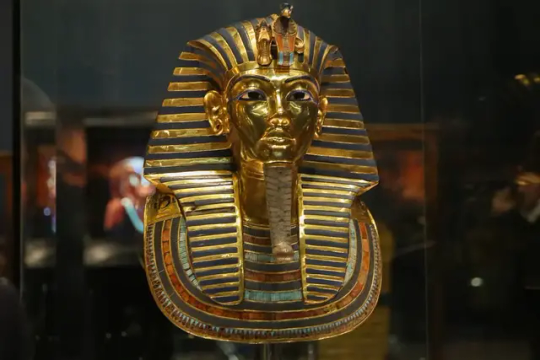
The golden funerary mask of Tutankhamun.
The unsealing and studying of the tomb is also credited with launching the modern era of Egyptology.
Tutankhamun took the throne as pharaoh around nine or ten years old and ruled between 1332 BC and 1323 BC.
However, he died by the time he turned 18.
There are no surviving records of Tutankhamun’s death and how the young pharaoh died remains a mystery.
However, Tutankhamun is suspected to have suffered from several health issues — likely linked to his father, Akhenaten, and his mother, Nefertiti, being brother and sister.
By Richard Pollina.
#‘Curse’ Behind King Tutankhamun’s Tomb Mysterious Deaths Finally Solved#King Tutankhamun#Pharaoh’s Curse#Old Kingdom#Valley of the Kings#Lord Carnarvon#Howard Carter#Egyptology#ancient artifacts#archeology#archeolgst#history#history news#ancient history#ancient culture#ancient civilizations#ancient egypt#egyptian history#egyptian mythology#egyptian pharaoh#egyptian antiquities#egyptian art
37 notes
·
View notes
Text

Isis and Nephthys stand by, while Anubis carries out the process of mummification
#Anubis#Isis#Nephthys#mummification#Egypt#Egyptian#ancient Egypt#ancient Egyptian#egyptology#archaeology#Kemet#Deir el medina#tomb#Kemetic#Kemeticism#Luxor#thebes#waset
34 notes
·
View notes
Text
Freindly reminder that King Hatshepsut was a trans man. He's probably the first historical figure we have pronouns for, and those pronouns were very clearly he/him. Queens ruled alone before and after him, he never had to do that. He had put so much effort into appearing as male to the world he doesn't deserve to be missgendered now. The idea that his gender is from political ambition is just applying terf logic about why trans men transition to one of our best documented transmasc historical figures, and one of the few trans historical figures to have a happy ending to his story.
#196#my thougts#ancient history#history#queer history#queerness#queer community#queer rights#queer#transmasc#trans man#transgender#trans boy#transsexual#trans rights#trans history#egyptology#ancient egypt#egypt#egyptian#bronze age#archeology
26 notes
·
View notes
Text
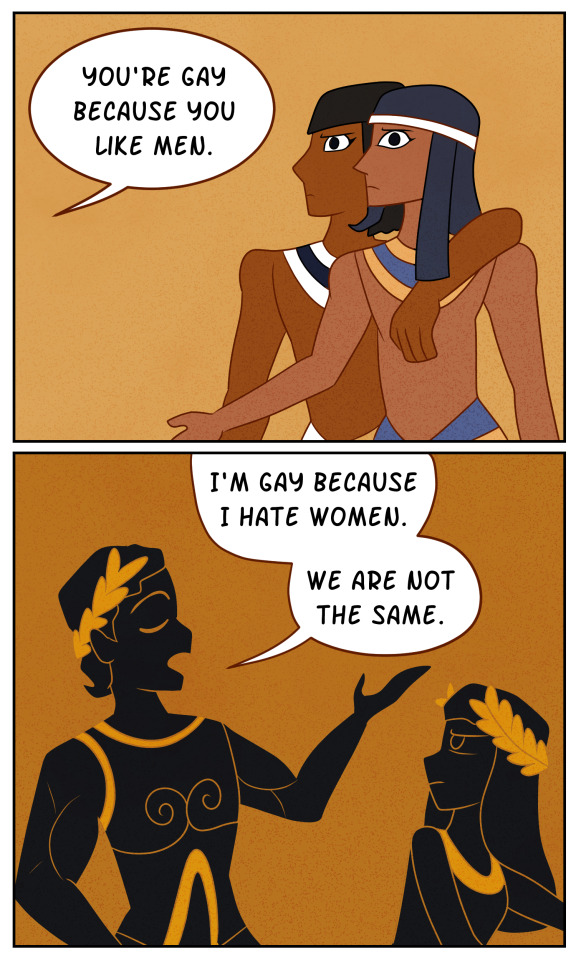
This seems to be what I've learned.
180K notes
·
View notes
Text
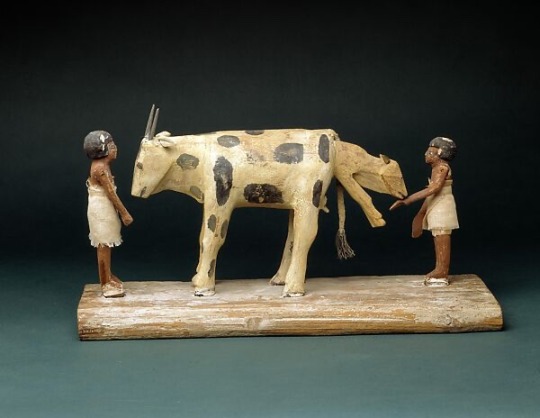
I can’t tell you how much I love this artwork from ancient Egypt (the Middle Kingdom). People have been raising cattle and practicing animal husbandry for so long, that there is something almost inherently human about this scene.
Everyone in the field of veterinary medicine or agriculture knows the feeling of staying up late with a laboring animal trying to make sure both mom and baby are okay. Delivering a calf is often physically and emotionally exhausting work that takes enormous patience and learned skill. It requires a unique balance of physical strength and gentleness to do correctly. There is no feeling quite like getting that baby out and everyone is okay. I’m certain ancient people must have felt the same way, and I wonder if the artist knew this feeling firsthand. I wonder if those humans depicted were people the artist knew, if the cow and calf maybe were as well.
18K notes
·
View notes
Text
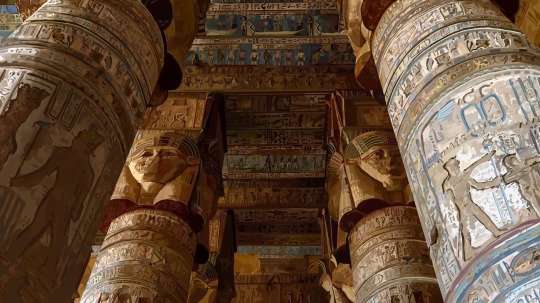
I know this isn't ninjago guys but I finished this 17 hour painting for my art class and I was proud of it so...enjoy.
I love Egypt fun fact about me. :)
#my art#art#egypt#egyptian#egyptology#egyptian art#ancient egypt#antiquity#ancient art#ancient egyptian#painting#digital painting
7K notes
·
View notes
Text
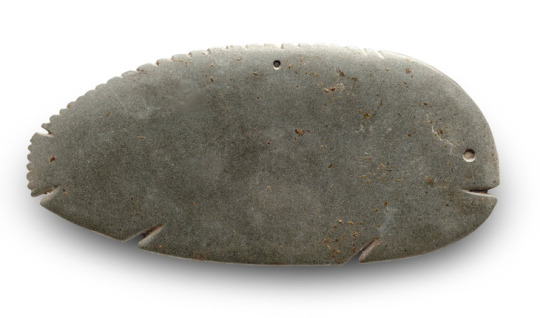



:) ancient egyptian greywacke fish
#:))))#it is impossible to look at these guys w/o a tiny spark of joy#field notes#ancient egypt#fish
10K notes
·
View notes
Text

A detail of painting of one of three musicians from tomb of Nakht (TT52).
New Kingdom, 18th dynasty ca. 1421-1372 BC.
Sheikh Abd el-Qurna. Thebes.
57 notes
·
View notes
Text
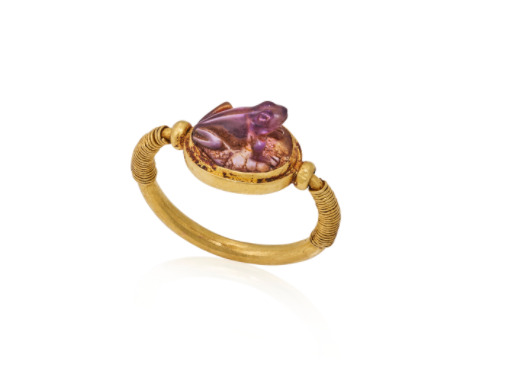
Gold swivel ring with amethyst frog, Egypt, New Kingdom, 1550-1229 BC
from Christies
10K notes
·
View notes
Text
WELL, WHO WOULD'A THUNK IT, THE GAME OF THE YEAR IS SENET, A GAME THAT ORIGINATED IN ANCIENT EGYPT 5000 YEARS AGO AND IS WIDELY RECOGNIZED AS THE OLDEST KNOWN BOARD GAME IN THE WORLD

WHAT A THRILLING GAME AWARDS (2023)
9K notes
·
View notes
Text
A satirical papyrus showing a lady mouse being served wine by a cat while another cat dresses her hair, a third cares for her baby, and a fourth fans her. The mice have hilarious huge, round ears.
Where: Egyptian Museum Cairo
When: New Kingdom
7K notes
·
View notes
Text

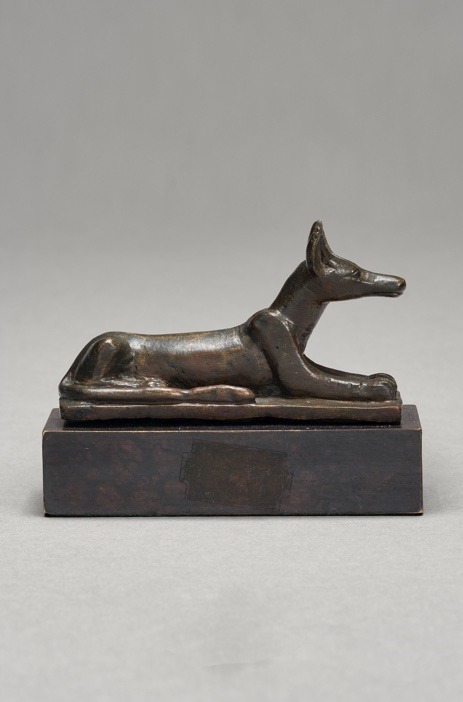
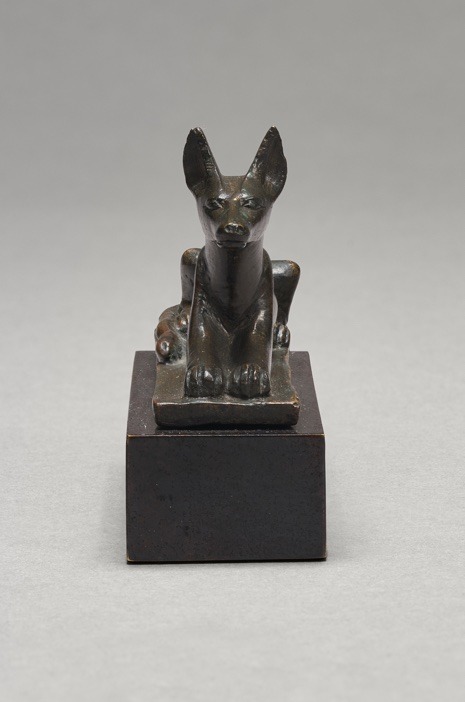
AN EGYPTIAN BRONZE RECLINING JACKAL
LATE PERIOD, 664-332 B.C.
#AN EGYPTIAN BRONZE RECLINING JACKAL#LATE PERIOD#664-332 B.C.#bronze#bronze statue#bronze sculpture#ancient artifacts#archeology#archeolgst#history#history news#ancient history#ancient culture#ancient civilizations#ancient egypt#egyptian history#egyptian antiquities#egyptian art
41 notes
·
View notes
